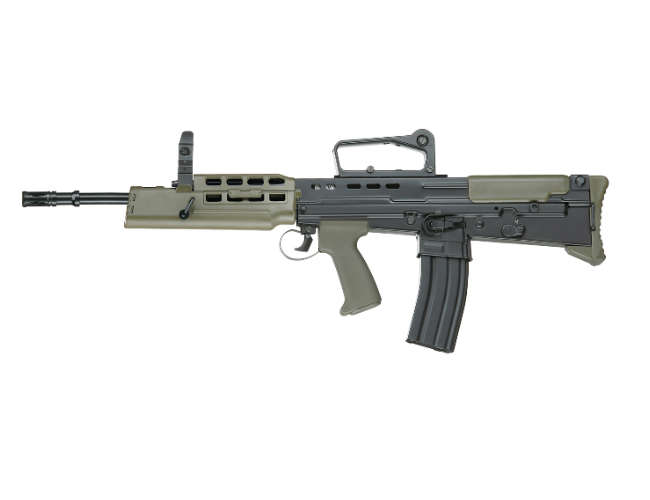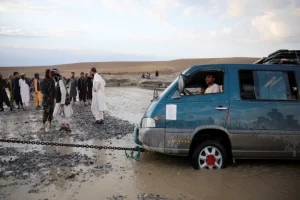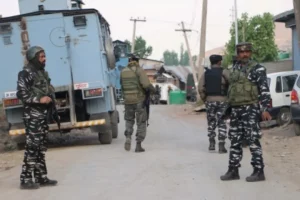Earlier this year, the well-established research body on weapons—Stockholm International Peace Research Institute (SIPRI)—noted that China has become the second-largest arms producer in the world, overtaking Russia and standing right behind the United States. It also found that some of the biggest arms producing companies in the world, a space dominated by American, West European and Russian firms, now includes Chinese companies in the top twenty.
Due to the lack of transparency by Chinese arms companies, SIPRI could not quantify their sales figures. However, SIPRI says: "If the four Chinese arms companies investigated in the study were included in the Top 100, they would all rank among the top 20, with combined estimated arms sales totaling $54.1 billion. Three of the companies would be ranked in the top 10." This shows that over the past decade China has seen a dramatic rise from being an importer of arms to a manufacturer and exporter, challenging dominant leaders.
What is also accepted globally is that China has steadily built up one of the largest research facilities, possibly next only to the US, which has helped it import, copy and clone weapons of various kinds. Chinese arms companies manufacture not only for the gargantuan domestic consumption but also for other countries in Asia and Africa. However, China's rise as the second-largest exporter of arms has come with challenges. Its weapons have constantly malfunctioned and many importing countries have paid heavily.
Discussing the quality of Chinese weapons, a retired general with the Indian Army said: "The weapon systems manufactured in China are not the best in the world; they are average in performance. But then you can't accept poor performance in weapon systems, that too during a battle. In one word, the Chinese weapons are no match for those from Russia, Israel, France and the US."
Giving an example, he says that nearly 50 per cent of the China-made pistols and grenades recovered from terrorists in Kashmir would not work. "Half of the grenades would not explode, half of the Chinese pistols that were recovered would not work," says the general. Such stories abound across the world. In November 2019, a senior US state department official said that countries should buy American weapons and not low-quality Chinese arms which kill not just the enemy but their own military personnel as well. He added that China is using low-pricing, bribery and predatory financing to sell its weapons. R Clarke Cooper, US Assistant Secretary of State for Political-Military Affairs, told potential foreign buyers of US arms in Washington:
"China is using arms transfers as a means of getting its foot in the door—a door that, once is opened, China quickly exploits both to exert influence and to gather intelligence.” He cited the example of armored personnel carriers (APCs) that Kenya had bought from Chinese company Norinco and said that dozens of Kenyan soldiers died in those vehicles in 2016.
Cooper added that the Chinese sales representative refused to sit in the APCs during the trials. In fact, the Kenyan media had reported that the Chinese APCs had poor quality brakes, the procurement process was opaque and the Chinese vehicles did not meet specifications. In Kenya, the Chinese armored vehicles were used extensively by both—the police and the army.
Chinese military equipment has been facing quality issues in many other nations as well. Cameroon had bought four Harbin Z-9 attack helicopters, of which, one crashed soon after purchase. The helicopter was shipped back to China for repairs from where it did not come back. The second crashed in 2019 due to faulty landing. For the Cameroonian Air Force, the helicopters serve as a deterrent against rebels and neighboring countries but its Chinese helicopters still lack sand filters in a region that has considerable dust.
The tiny African nation, which is grappling with armed conflict, is also using the American Bell helicopters for multiple purposes. In another example, the Royal Jordanian Air Force (RJAF) faced problems with drones manufactured in China—currently the largest manufacturer of drones. The communist country has adopted a policy under which it looks at West Asia as a contiguous region and sells its armed drones and Unmanned Aerial Vehicles (UAVs) without discrimination or favor to all the countries in the region.
China has also sold its drones to many African countries. https://indianarrative.com/world/armenia-azerbaijan-conflict-highlights-pakistan-drone-threat-to-india-23919.html In June 2019, weapon enthusiasts were taken aback to see a notice on the RJAF website. The notice was about auctioning six CH-4B 'Rainbow' UAVs, made by China, which it had procured barely two years back. Reportedly, Jordan was unhappy with the performance of the UAVs and after two years decided to get rid of the weapons.
The Rainbow UAV can lift heavy munitions including surface-to-air missiles, GPS-guided bombs and anti-tank missiles. China has sold these to a handful of African, West Asian, Central Asian nations and to Pakistan and Myanmar in India's vicinity. Closer home, Bangladesh is complaining about the Chinese VT-1A tanks which do not deliver adequate power in mountain conditions and suffer from lack of spare parts. Bangladesh had bought 44 of these vehicles from China. The Chinese VT-1A is a copy of the Russian T-54 tanks, which the Chinese refurbished with modern electronics, better vision, heavy armor and more power. With complaints emanating from the engine, China now plans to make these engines at home instead of procuring these from Ukraine.
While the communist country has been churning out weapons at a fast rate, the quality is nowhere near American or Russian arms. Chinese weaponry shows defects as it is not battle tested, unlike the American and Russian production. In the race to sell its weapons and to extend its influence across continents, China has also faulted on training, maintenance and spare parts. The Kenyan soldiers had to read the manuals to operate the APCs—no training was provided to them.
The Cameroonian air force never received its attack helicopter after sending it for repairs. The Bangladeshi tank engines had a supply chain issue besides a fault. While China has succeeded in achieving its numerous objectives, the importing countries are not happy as they pay a heavy price for cheap but inferior Chinese weapons.




















